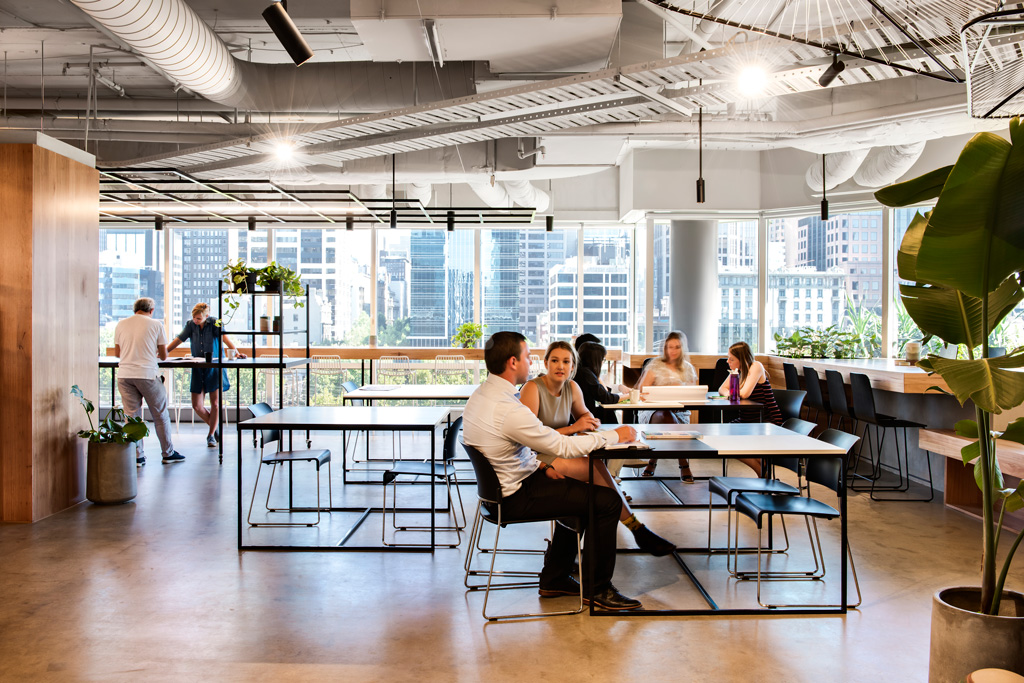What is Smart Office?

What pops into your mind when you imagine the ‘office of the future’? Hologram video conferences and robots roaming the halls? While those sci-fi staples may one day be a reality, many workplaces are already implementing a key component of the futuristic office: digital office technology. From AI-powered virtual assistants to occupancy sensors and custom climate controls, smart office tech aims to revolutionise how we work.
But what makes this tech so smart in the first place? Simply put, it’s designed to intuitively meet our needs by sensing and responding to what’s happening in the office. Instead of requiring manual adjustments, smart systems can promote collaboration through auto-scheduling software, preserve energy by detecting when conference rooms are empty, and foster productivity by allowing employees to fine-tune lighting and temperatures to their personal comfort.
The benefits don’t end there. By collecting and analysing office usage data, smart office technology grants leadership insight for better informed decisions on layout changes and infrastructure needs. It also enables offices to be safer, more sustainable, and more appealing spaces for top talent.
The workspace is undoubtedly getting smarter, but is it right for your office? In this blog series, we’ll highlight real-world smart office examples and solutions, from meeting room tablets to occupancy sensor networks. We’ll discuss how intelligent tech can solve workplace pains, boost efficiency, and elevate your company culture. Most importantly, we’ll cover how to determine which smart office technologies are the smartest investments for where you want your workspace to go.
8 of the best Smart Office Technologies
loT Devices in Smart Offices
The Internet of Things (IoT) allows everyday objects to connect to the internet and collect and share data. IoT devices are becoming fixtures in smart offices to track room usage, manage inventory, regulate temperature and lighting, and more. IoT sensors can monitor noise levels, foot traffic, desk availability, and even air quality to help create healthier and more practical office environments.
Smart Lighting Systems
Smart lighting gives office occupants more control over their workspace lighting. Intelligent LED lighting systems can be programmed and adjusted through apps and voice controls. Features often include scheduling, dimming, colour temperature tuning, occupancy/vacancy sensors, and daylight harvesting. Smart lighting cuts energy costs, tailors lighting to personal preferences, and can even track health metrics.
Smart Security Systems
Smart security leverages internet-connected cameras, access controls, alarms, sensors, and analytical software to boost office security. Features include secure remote access, responsive alerts, AI-enabled anomaly detection, and instant reviews of security breaches. Some systems integrate with other smart tech like lighting controls, thermostats, and IoT sensors for added protection.
Al Tools
Artificial intelligence (AI) office tools help automate tasks, optimise efficiency, and uncover data insights. Smart assistants schedule meetings, manage projects, facilitate communication, take notes, provide customer support, generate transcripts and translations, craft content, and more. AI can also analyse workspace usage patterns and model future needs to guide smart office design planning.
Smart Screens
Networked touchscreens and smart displays are replacing static signage with dynamic digital messaging and paper with agile interfaces. These centralised smart screens allow for room scheduling coordination, interactive wayfinding, video calls, wireless presentations, announcement displays, and easy access to other smart office systems.
Smart Scheduling Systems
Intelligent calendar systems enable offices to make better use of their meeting rooms. Smart scheduling panels outside rooms can indicate current and upcoming reservations. Systems easily adapt to scheduling changes on the fly while using data like room capacities and employee locations to optimise room assignments.
Voice-Controlled Devices
Voice assistants like Amazon Alexa and Google Home are granting hands-free control over smart office devices and services. Workers can manage schedules, meetings, calls, messages, emails, documents and various smart devices through voice commands. Smart speakers can also stream background music and provide voice-activated information lookups.
Health and Wellness Technology
Some workplaces now incorporate smart health and wellness tech to support better employee health and comfort. Examples include connected fitness devices; posture trackers and prompts; environmental quality monitoring; self-tinting, headache-relieving window filters; and apps that guide breathing/stretching breaks or promote improved sleep, diet and exercise habits. This technology empowers employees to self-monitor and optimise their own health and productivity.

These are just some of smart office technology highlights helping to drive greater safety, sustainability, convenience, insight and satisfaction across modern workplaces. With solutions like machine learning analytics, augmented reality collaboration tools and speech-based applications on the horizon, offices are sure to get even smarter. Embracing innovation today and into the future is key for organisations that want to foster flexibility, profitability and competitive advantage.


